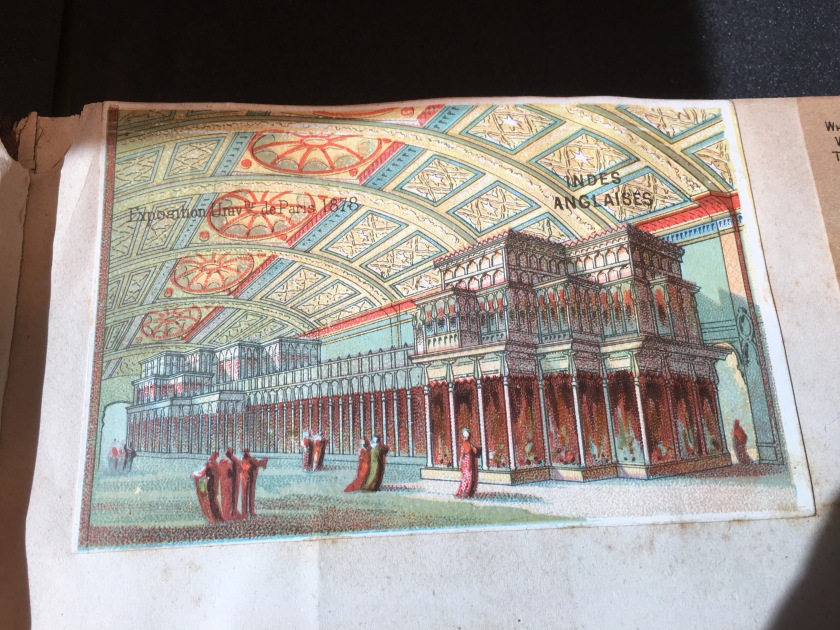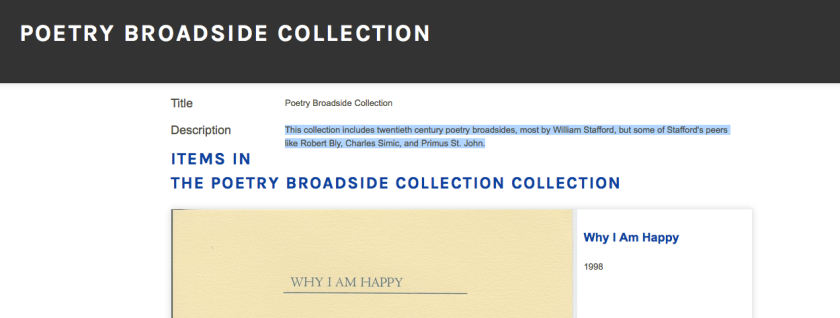Yesterday, I traveled down to the Philadelphia Museum of Art’s Perelman Building to meet up with my Rare Book School friend and the museum’s archivist Susie Anderson. While there, I got to see the Library & Archives space on the second floor, travel down into the actual archival storage room, see a space they are converting into a digitization lab, and look at some archival materials. I found out that the museum is in the process of setting up a digital repository, and they are taking “baby steps” toward more digital initiatives and resources through fundraising. Below are some photos from the day.

Susie shows me the digital forensics hardware.

First steps toward a digitization lab.

In archival storage.

In archival storage.

Susie shows me archival storage.

Checking out the Greenfield Visual and Digital Resources Center.

After lunch, I got to check out some of the exhibits in the Perelman building, including this video installation by artist Jitish Kallat.

Covering Letter, a video installation by Jitish Kallat.

The 1939 letter from Gandhi to Hitler used in the Kallat video installation.

David Conqueror of Goliath (c. 1515–16), an “Engraving after a work by Raphael,” by Marcantonio Raimoni, on display in the Italian Renaissance Gallery in the Perelman Building

A 1933 gallery brochure from an exhibition of Mina Loy paintings at the Julien Levy Gallery.

A 1933 gallery brochure from an exhibition of Mina Loy paintings at the Julien Levy Gallery.

A futurist book in the collection.

A futurist book in the collection.

A futurist book in the collection.

A futurist book in the collection.

A futurist book in the collection.

A futurist book in the collection. Check out the heavy letterpress indentions.

A futurist book in the collection.

A futurist book in the collection.

A futurist book in the collection.

A futurist book in the collection.

A futurist book in the collection.

A futurist book in the collection.

A futurist book in the collection.

A futurist book in the collection.

A futurist book in the collection.

A futurist book in the collection.

A futurist book in the collection.

A futurist book in the collection.

A futurist book in the collection.

A futurist book in the collection.

A futurist book in the collection.

A futurist book in the collection.

A futurist book in the collection.

A futurist book in the collection.

A futurist book in the collection.

A futurist book in the collection.

I also got to see a few manuscripts by writers, all preserved via facsimile.

I also got to see a few manuscripts by writers, all preserved by facsimile.

An envelope holding the Mallarmé facsimiles.

A Centennial scrapbook in the collection.

A Centennial scrapbook in the collection.

A Centennial scrapbook in the collection.

A Centennial scrapbook in the collection.

A Centennial scrapbook in the collection.

A Centennial scrapbook in the collection.

From a William Copley portfolio.

With Susie Anderson in the Philadelphia Museum of Art’s Library and Archives.

The Philadelphia Museum of Art’s Library and Archives are housed in the Perelman Building.



